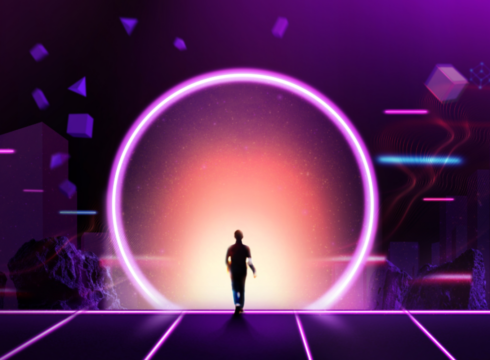According to Deloitte, the metaverse could boost the economy by $79 Bn to $148 Bn annually by 2035. That’s 1.3–2.4% of the GDP
As a leading IT service hub, India has a digitally-ready workforce that can usher in the metaverse
With the global metaverse economy slated to reach $5 Tn by 2030, India needs to step up
Inc42 Daily Brief
Stay Ahead With Daily News & Analysis on India’s Tech & Startup Economy
Facebook’s name change to Meta was a line in the sand, an announcement that the metaverse had arrived. The concept of the metaverse is still very much undefined and evolving. While some definitions describe it as a fully immersive virtual world, others, including myself, perceive it as an extension of our current digital communication tools, such as Zoom, WhatsApp, or Google Meet.
While ideas about how the metaverse might remain blurry, there’s no doubting its economic potential. In India, things are looking good, with Deloitte predicting the metaverse could boost the economy by $79 Bn to $148 Bn annually by 2035. That’s 1.3–2.4% of the Gross Domestic Product (GDP).
New Digital Economy
With help from augmented reality (AR), virtual reality (VR), and a host of other technologies, the metaverse will provide new ways for humans to interact with the world virtually. People will socialise, work, shop, and find entertainment in a virtual space available 24/7.
Welcome to a new digital economy with new rules of engagement. In the future, a real estate agent in the metaverse might take homebuyers on virtual tours of physical properties. An engineer could replicate an online model of a yet-to-be-manufactured tool, giving investors a 360-degree experience of how it would look, feel, and work. The emergence of digital twin cities could improve urban planning practices.
Already elements of the metaverse are being used to train retail staff and healthcare personnel. And there’s more in store. Last year, a Hong Kong-based luxury fashion brand held a virtual fashion show with no physical apparel, then offered VR and AR tools enabling shoppers to trial clothes virtually before placing an order. It resulted in less inventory, a lower carbon footprint, and a new way to shop.
In a recent online sneaker purchase with Adidas, I was struck by the powerful impact of AR in providing an immersive, lifelike experience. With AR, I was not only able to see what the shoes looked like on my feet, but I could also feel their texture and get a true sense of their fit.
India And The Metaverse
Thanks to our young and tech-savvy population, India has the basic ingredients to help the metaverse flourish. Moreover, the country has already demonstrated a readiness to accept new technologies—mobile phones being a case in point.
The first mobile devices hit Indian markets in the late 1990s. By 2020, smartphones had penetrated 54% of the Indian population, up from 23% in 2016. Smartphone penetration could reach 96% by 2040, says one estimate.
Consider also our quick embrace of digital payments since the pandemic lockdowns. Between September 2019 and 2021, India’s use of digital payment tools grew by 75% year-on-year. This impressive trend is further evidenced by the significant increase in digital payment transactions, which surged from INR 2,071 Cr in FY 2017-18 to INR 8,840 Cr in FY 2021-22.
This openness extends to the metaverse as well. A recent IPSOS survey noted that 80% of Indian respondents were familiar with the metaverse, and 75% were positive about engaging with AR and VR in their daily lives.
Indian gamers have already embraced transmedia experiences. They devote eight-plus hours every week to gaming and may be more than willing to plug into the metaverse. Further, the introduction of 5G will revolutionise the gaming industry, providing gamers with a host of benefits that were previously unattainable. According to a few projections, the PC and mobile game markets in India are expected to achieve a value of $1.4 Bn by 2026 and attract a user base of 630 Mn gamers.
Tech Fundamentals In Focus
As a leading IT service hub, India has a digitally-ready workforce that can usher in the metaverse. As users blend their physical and virtual identities during interactions within the metaverse, expanding the blockchain could help verify ownership claims and track the movement of digital assets.
Effective taxation of digital currency and non-fungible tokens (NFTs) could bring handy revenue to the government. Meanwhile, the Reserve Bank of India hopes to successfully adopt its newly launched pilot for the Central Bank Digital Currency (CBDC), the e-rupee.
India is setting the pace in regulation as well. The upcoming Digital India Act framework will replace outdated IT laws and address not only cybercrime but also security, data privacy rights, misinformation, online harassment, identity theft, and many other issues that are intrinsic to our times.
With the global metaverse economy slated to reach $5 Tn by 2030, India needs to step up. Affordable access, supportive regulation, and mechanisms to spread digital literacy will support the well-being of Indian netizens even as the new virtual economy drives job growth and revenues.
Note: We at Inc42 take our ethics very seriously. More information about it can be found here.


